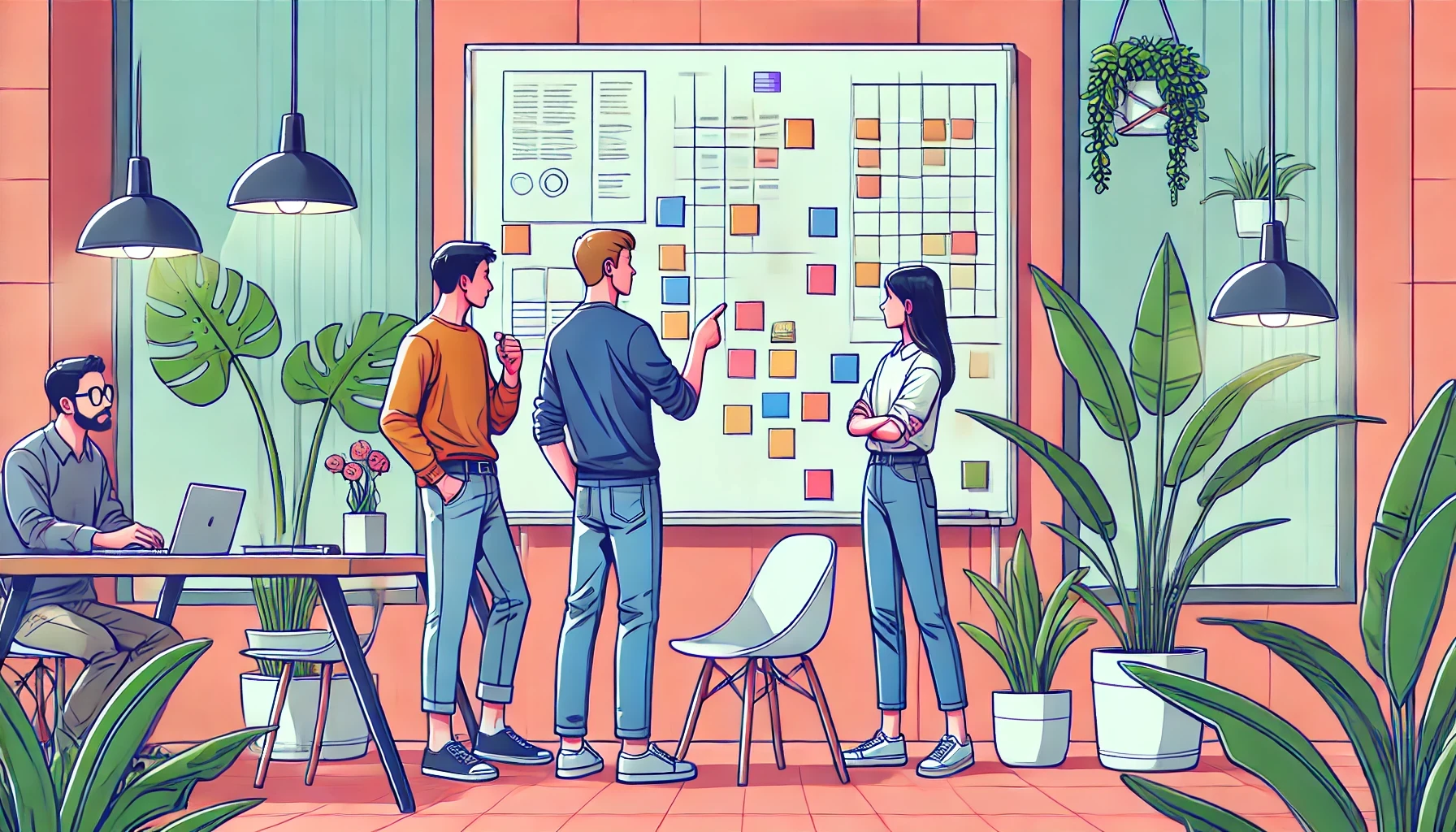Remember that time you tried to assemble IKEA furniture without instructions? Chaos, right? Managing a complex project without a clear visual guide feels the same. Enter Obeya, your new agile and Scrum best friend. Let’s explore how this concept can revolutionize your work.

What is Obeya?
Obeya, a Japanese term meaning “big room”, comes from the Toyota Production System. Imagine it as a command center where cross-functional teams gather to solve problems, make decisions, and stay aligned. It’s the ultimate hub for collaboration and efficiency, transforming abstract project plans into visual, actionable reality.
Why should Scrum Masters care?
As a Scrum Master, you’re the guardian of your team’s process. Ensuring smooth sprints and adherence to agile principles is your bread and butter. But what if you had a tool that enhanced transparency, facilitated problem-solving, and boosted collaboration? That’s where Obeya steps in.
One of Obeya’s greatest strengths is its focus on continuous improvement. Regular reflection sessions and updates ensure the Obeya stays aligned with project goals. This iterative process mirrors the agile principle of continuous improvement, helping teams stay agile and responsive.
Obeya thrives in cultures valuing teamwork, transparency, and open communication. Even in hierarchical or individualistic cultures, Obeya can be a powerful tool by gradually introducing its principles and showing quick wins. Align the Obeya with your organization’s vision and purpose to ensure it supports your strategic goals.
Roles in the Obeya
Participants
Participants are your team members. Their role is to engage in sessions, bring updates, raise issues, and contribute to problem-solving. Foster a culture of psychological safety where everyone feels valued and heard.
Builders
Builders design the space, setting up visual tools and ensuring adaptability to different project needs. Flexibility is crucial—think modular furniture and movable whiteboards for physical rooms, or customizable templates for digital spaces.
Hosts
Hosts facilitate the sessions, introducing discipline to foster continuous improvement and ensuring meetings are productive. A good host manages conflicts, keeps the team focused, and ensures everyone’s voice is heard.
Coaches
Coaches help scale Obeya practices across the organization. They provide training, mentor new users, and use storytelling to make complex information engaging and memorable. Coaches ensure the Obeya evolves with the team’s needs.
Setting up an Obeya
Setting up an Obeya doesn’t have to be overwhelming. Start with a physical space equipped with whiteboards, charts, and post-it notes. For remote teams, digital tools like Miro, Mural, or iObeya can replicate this environment online. The key is making information visible and accessible to everyone.
In your Obeya, include visual aids like Kanban boards, roadmaps, and cumulative flow diagrams. These tools help the team see the workflow, identify bottlenecks, and track progress in real-time. Seeing is believing, and these visuals will make abstract concepts tangible.
Storytelling can make data and progress reports more engaging. Frame your project updates within stories of challenges overcome and milestones achieved. This approach makes information digestible and fosters a deeper connection to the project.
For the tech-savvy, using VR to create a virtual Obeya can offer an immersive experience. This can be particularly useful for complex projects that benefit from a deep understanding of spatial or visual information.
Conclusion
Integrating Obeya into your agile practices offers numerous benefits, from enhanced communication and decision-making to boosted collaboration and continuous improvement. By making information visible and accessible, fostering a problem-solving culture, and ensuring strategic alignment, Obeya transforms how teams work together to achieve their goals.
To maximize Obeya’s benefits, consider investing in training programs. Courses tailored to different roles—like Fundamentals, Host, Builder, and Coach training—can enhance your team’s proficiency and ensure everyone is on the same page.
So, why not take a leap of faith and incorporate Obeya into your Scrum framework? The clarity, alignment, and efficiency it brings could be the game-changer your team needs.
